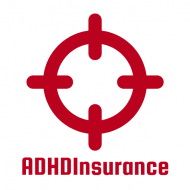Attention Deficit Hyperactivity Disorder (ADHD) is often viewed through a clinical lens, focusing on the challenges and difficulties associated with the condition. However, emerging research and anecdotal evidence suggest that individuals with ADHD can experience unique advantages stemming from their neurological differences. Understanding these benefits not only aids in destigmatizing ADHD but also empowers those affected to recognize and leverage their distinct traits in various aspects of life.
In this article, we will explore the unique advantages that come with ADHD traits, as well as how these can be harnessed for enhanced creativity and innovation. Recognizing the positive aspects of ADHD can help individuals cultivate their strengths and navigate their environments more effectively.
Understanding the Unique Advantages of ADHD Traits
Individuals with ADHD often exhibit a range of characteristics that can be seen as advantageous in various contexts. For example, hyperfocus—an intense concentration on tasks that interest them—can lead to remarkable accomplishments in areas such as art, technology, or problem-solving. This ability to concentrate deeply can result in innovative solutions and original ideas, often setting individuals with ADHD apart in competitive fields. Moreover, the propensity for risk-taking and non-conformity can drive individuals to pursue unconventional paths that others might shy away from, leading to breakthroughs and advancements.
Additionally, many individuals with ADHD possess heightened levels of energy and enthusiasm, which can be infectious and motivating to those around them. This dynamic nature can enhance teamwork and collaboration, fostering an engaging and active environment. The adaptability that often accompanies ADHD can also be a significant advantage in today’s fast-paced world, allowing individuals to pivot quickly in response to new information or changing circumstances. By recognizing these traits, individuals with ADHD can cultivate a self-identity that embraces their differences as strengths rather than weaknesses.
Harnessing ADHD for Enhanced Creativity and Innovation
One of the most notable benefits of ADHD is its association with enhanced creativity. Many individuals with ADHD exhibit a unique way of thinking that allows them to draw connections between seemingly unrelated concepts, leading to innovative ideas and solutions. This divergent thinking style, which reflects a tendency to generate multiple ideas or solutions, can be particularly advantageous in creative professions such as design, marketing, and the arts. By fostering environments that encourage brainstorming and free expression, individuals with ADHD can thrive and contribute valuable insights and perspectives.
Moreover, the capacity for high-energy activity often present in those with ADHD can drive innovation by pushing boundaries and challenging the status quo. When individuals channel their energy into productive outlets, they can lead projects that require out-of-the-box thinking and dynamic problem-solving skills. Embracing the traits associated with ADHD can empower individuals to utilize their creativity in constructive ways, ultimately enhancing their contributions to any team or organization. By reframing ADHD as a unique asset, individuals can unlock their full potential and inspire others to do the same.
In conclusion, while ADHD is often associated with challenges such as inattention and impulsivity, it is essential to recognize the unique advantages that come with the condition. From enhanced creativity and the ability to think divergently to the potential for deep focus on passionate projects, individuals with ADHD can harness their traits for significant personal and professional gain. By embracing these strengths, individuals with ADHD can not only improve their own lives but also contribute innovatively to society as a whole. Understanding and valuing these benefits is a critical step toward fostering an inclusive environment that celebrates neurodiversity.
Dr. Jonathon Preston is a respected mental health specialist dedicated to helping individuals overcome challenges. With advanced training in psychology and decades of experience in the mental health field.
